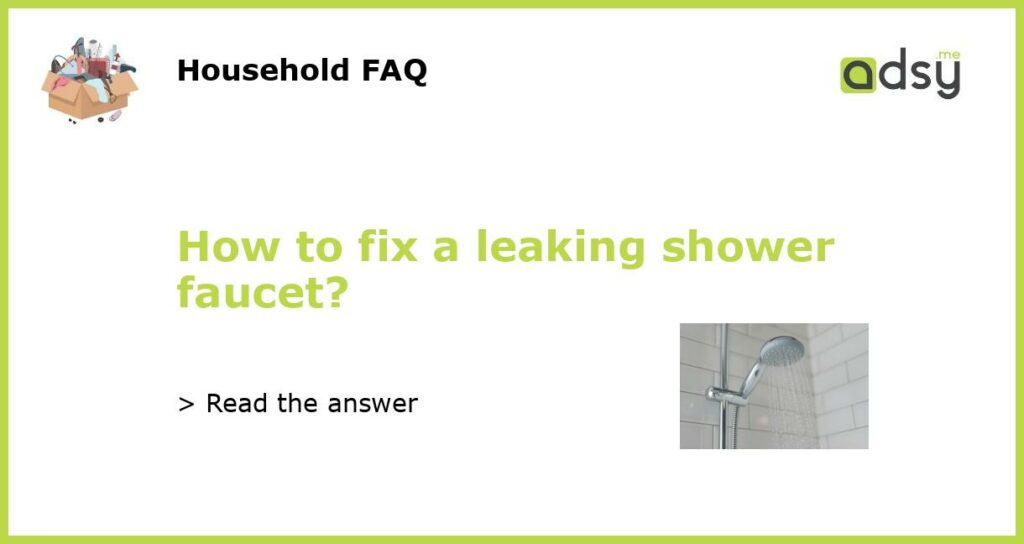Identifying the Problem
If you have a leaking shower faucet, the first step to fixing it is to identify the problem. Leaking shower faucets can be caused by a number of issues, including worn out washers, damaged valve seats, or loose connections. To determine the exact cause of the leak, you will need to examine the faucet and its components closely.
Gathering the Necessary Tools
Once you have identified the problem with your leaking shower faucet, the next step is to gather the necessary tools for the repair. Depending on the issue, you might need items such as a wrench, pliers, screwdrivers, and replacement parts like washers or valve seats. It is important to have all the required tools on hand before you start the repair to avoid any unnecessary delays.
Repairing the Faucet
Now that you have identified the problem and gathered the necessary tools, it is time to start repairing the leaking shower faucet. The exact steps will vary depending on the specific issue you are dealing with, but here are some general guidelines:
- Shut off the water supply to the faucet by turning off the water valve.
- Remove the faucet handle by unscrewing the screw or nut holding it in place.
- Inspect the washers, valve seats, and other components for any signs of damage or wear.
- If the washers are worn out, replace them with new ones of the same size and type.
- If the valve seats are damaged, use a valve seat wrench to remove and replace them.
- Reassemble the faucet, making sure all the components are properly tightened.
- Turn on the water supply and check for any leaks. If there are still leaks, repeat the steps and ensure all parts are properly installed.
Preventing Future Leaks
Once you have successfully fixed your leaking shower faucet, you might want to take steps to prevent future leaks. Here are some tips to help you avoid the hassle of dealing with a leaking faucet in the future:
- Regularly inspect your faucets for any signs of leaks or damage.
- Replace old or worn out washers and valve seats regularly, even if they are not currently causing any issues.
- Don’t overtighten the faucet handle when operating it. This can cause unnecessary strain on the components and lead to leaks.
- Consider installing a water pressure regulator if your water pressure is too high. High water pressure can cause faucets to leak or wear out more quickly.
- Be mindful of what you put down your drains. Avoid pouring chemicals or other harsh substances that can corrode the faucet components.
When to Seek Professional Help
While fixing a leaking shower faucet can be a relatively simple task for many homeowners, there are some situations where it is best to seek professional help. If you are unsure about how to identify or fix the problem, don’t have the necessary tools, or if the leak persists after attempting the repair, it is advisable to contact a professional plumber. They have the expertise and experience to quickly diagnose and fix even the most complex faucet issues, ensuring a long-lasting solution to your leaking shower faucet.






![100% Natural Loofah Mitt, [UK Brand] Exfoliating Mitt Made with Eco-Friendly Egyptian Loofa Sponge, Body Exfoliator Luffa Glove for Shower and Bath - x1 Pack](https://m.media-amazon.com/images/I/51S3FVuytpL.jpg)